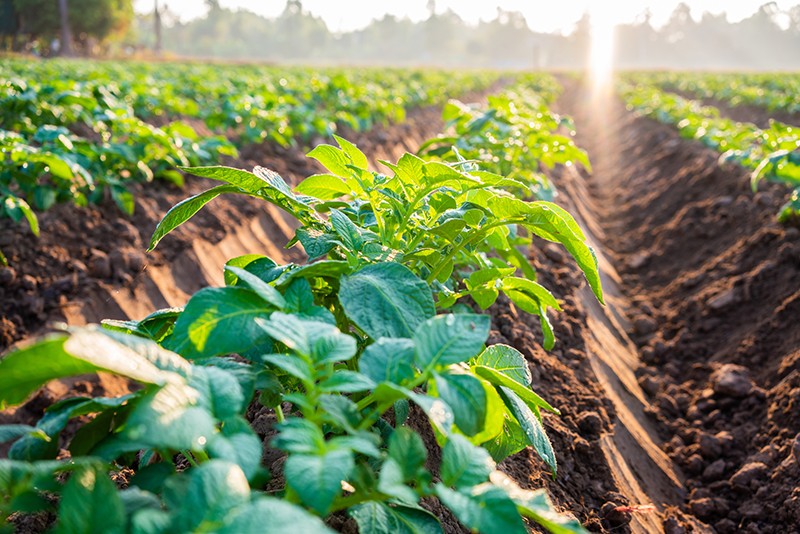Despite the progress made in food production, one in nine people— >800 million worldwide—doesn’t have enough to eat. In parallel, approximately 30-40% of the food produced in the world doesn’t get eaten.
Addressing food loss and waste could have a huge impact —not just in reducing hunger but also in mitigating the effects of climate change. Emissions resulting from total food loss and waste account for 8 percent of the world’s total greenhouse gas emissions, a figure that’s four times the amount produced by the aviation industry.
To date, most efforts to understand and address the problem have focused on food waste, defined by the Food and Agriculture Organization (FAO) of the United Nations as “the discard of edible foods at the retail and consumer levels.” However, up to half of the food lost worldwide—worth an estimated $600 billion—occurs upstream, between harvest and distribution.
Food producers and retailers face an urgent need to act. The consequences of food loss will only become more dire. The situation also represents an opportunity. Our analysis suggests the costs of food loss are on par with or exceed the typical retailer’s net profits. Effective measures could help food producers, grocery retailers, and other stakeholders capture value while simultaneously shrinking their Scope 3 emissions.
Understanding the root causes of food loss
Exactly where in the supply chain does food get left behind, and what factors contribute to food loss? In collaboration with a subset of members of The Consumer Goods Forum’s (CGF) Food Waste Coalition of Action and McKinsey & Company, we explored the path food takes from farm to retailer, using tomatoes as a test case. We analysed the tomatoes’ journey in both developed and developing markets, from production (in fields and greenhouses) to retail destinations (sold fresh in markets and sent into the processed supply chain).
We found that out of every 100 tomatoes produced in developed markets, only 58 to 72 complete the journey from production to store shelves. About 15 percent are left in the field during harvest. In the developing world, just 35 to 58 make it to stores.

Pursuing the opportunity
What accounts for the upstream losses? Factors beyond the control of food producers (for example, crop damage from weather) play a role, as do practices in specific parts of the supply chain (such as overproduction or variations in processing). But our research indicates a share of food loss is also linked to the interactions of players within the value chain. For instance, growers may overproduce because they lack accurate information on supply and demand. Quality and specifications set by customers (most often retailers) can lead growers to discard product for failing to make the grade postharvest. Procurement practices and contract structures don’t create incentives for players to limit food loss.
Food manufacturers and retailers are at the center of the food value chain and are uniquely positioned to lead global efforts to reduce food loss. A solid action plan would consist of three coordinated actions: first, establish a baseline and set concrete targets; second, systematically develop and prioritise initiatives together with partners across the value chain; and last, put the enablers for sustained change in place.
Gaining a clear, detailed picture of where food loss occurs, and what the contributing factors are, is a critical first step to creating urgency and change. Complete, perfect numbers do not yet exist, so stakeholders should focus on collecting directionally correct numbers that enable action.
Companies can interview internal teams and supplier data, review third-party research. On-farm food loss measurement protocols exist and are available online. Some companies perform annual external audits. New digital technologies such as blockchain make it possible to trace products at every stage from farm to store, though these solutions have yet to be rolled out widely.
What stakeholders can do
Ultimately, addressing food loss will require all stakeholders to embrace a new mindset. They will need to approach the issue not as an unfortunate cost of doing business but as the result of missed opportunities across production, procurement, R&D, sales, and the supply chain. This perspective also makes solving food loss a potential value pool that could improve both revenues and profits.
If all participants in the value chain were to work together, our analysis suggests we could decrease upstream food loss by 50 to 70 percent. Four themes hold the key:
- Minimise loss during production and processing by improving technology and handling practices. For example, supplier collaboration programs could maximise farmer yields, and operational excellence programs at manufacturers could decrease losses during handling.
- Mitigate loss during transit by improving supply chain infrastructure, technology, and communication. These measures could help producers balance supply and demand, while a more efficient and transparent supply chain could limit spoilage.
- Sell more of what is produced by adapting procurement and maximising redistribution to existing or new outlets. For example, shifting from a “loss” to “value stream” mindset could lead to more consistent upcycling and quantify any food loss.
- Structurally prevent food loss by enabling crop resilience and strengthening agriculture infrastructure and ecosystems.
Some actions will require investments, all will call for new ways of working. To enable significant, sustained change, organisations should implement robust and collaborative governance models—with cross-functional accountability, clear responsibilities, and KPIs at multiple organisational levels.
Food loss has largely flown beneath the radar to date, a dynamic that is poised to change dramatically. Efforts to address global hunger and growing scrutiny regarding food production’s impact on climate change will make it a top priority for consumer goods executives—to say nothing of the value at stake for organisations that can get it right. Progress won’t be easy, but these efforts could have a lasting, positive effect on a global scale.

